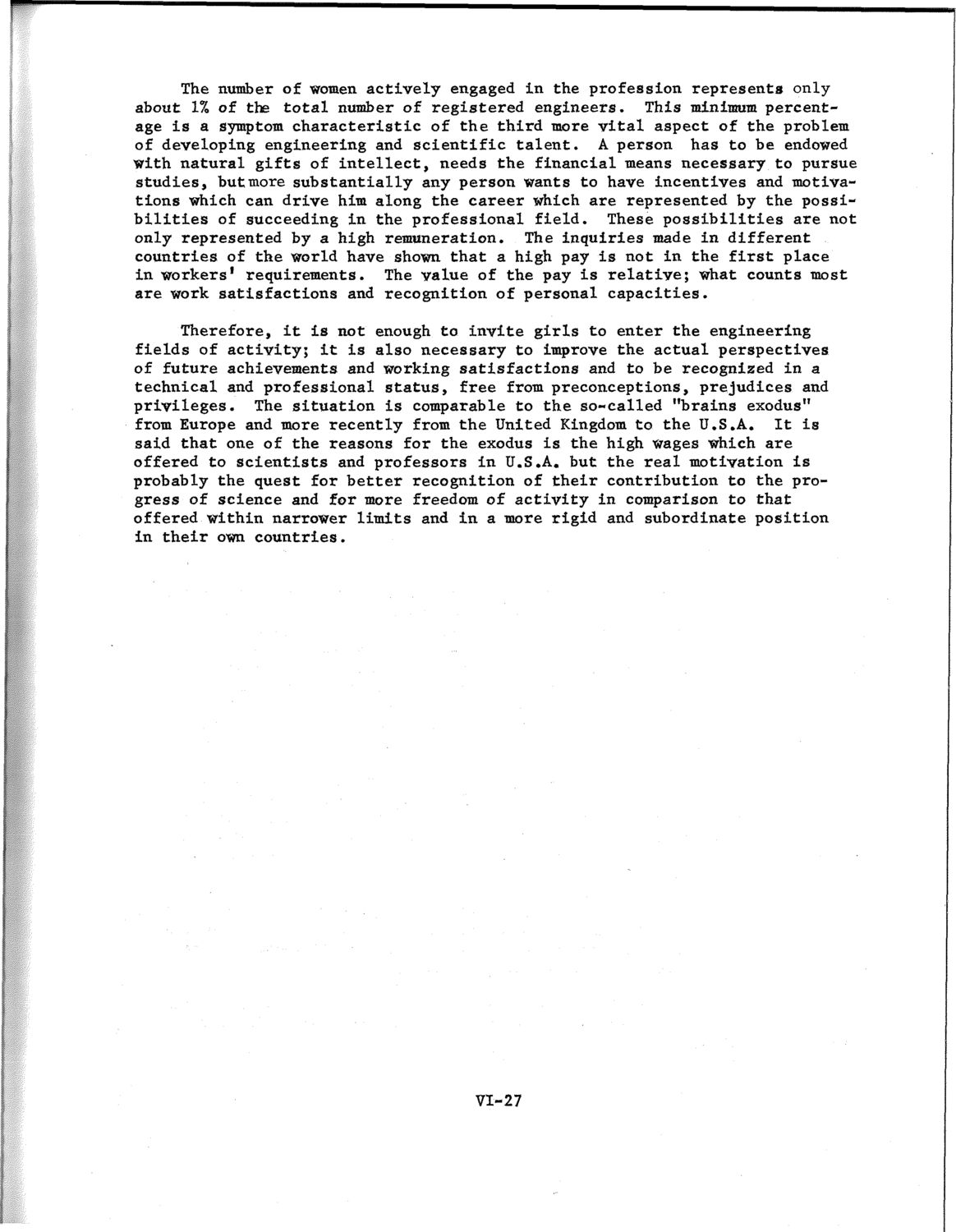| |
| |
Caption: SWE - Proceedings of the First International Conference of Women Engineers and Scientists
This is a reduced-resolution page image for fast online browsing.

EXTRACTED TEXT FROM PAGE:
The number of women actively engaged in the profession represents only about 1% of the total number of registered engineers. This minimum percentage is a symptom characteristic of the third more vital aspect of the problem of developing engineering and scientific talent. A person has to be endowed with natural gifts of intellect, needs the financial means necessary to pursue studies, butmore substantially any person wants to have incentives and motivations which can drive him along the career which are represented by the possibilities of succeeding in the professional field. These possibilities are not only represented by a high remuneration. The inquiries made in different countries of the world have shown that a high pay is not in the first place in workers' requirements. The value of the pay is relative; what counts most are work satisfactions and recognition of personal capacities. Therefore, it is not enough to invite girls to enter the engineering fields of activity; it is also necessary to improve the actual perspectives of future achievements and working satisfactions and to be recognized in a technical and professional status, free from preconceptions, prejudices and privileges. The situation is comparable to the so-called "brains exodus" from Europe and more recently from the United Kingdom to the U.S.A. It is said that one of the reasons for the exodus is the high wages which are offered to scientists and professors in U.S.A. but the real motivation is probably the quest for better recognition of their contribution to the progress of science and for more freedom of activity in comparison to that offered within narrower limits and in a more rigid and subordinate position in their own countries. Vl-27
| |